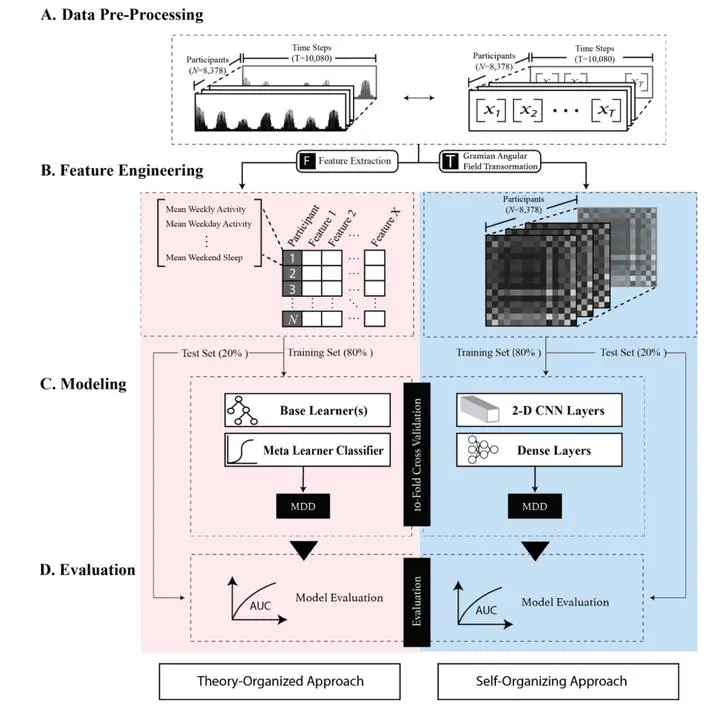Detecting major depressive disorder presence using passively-collected wearable movement data in a nationally-representative sample
 Image credit: Unsplash
Image credit: UnsplashAbstract
Major Depressive Disorder (MDD) is a heterogeneous disorder, resulting in challenges with early detection. However, changes in sleep and movement patterns may help improve detection. Thus, this study aimed to explore the utility of wrist-worn actigraphy data in combination with machine learning (ML) and deep learning techniques to detect MDD using a commonly used screening method: Patient Health Questionnaire-9 (PHQ-9). Participants (N = 8,378; MDD Screening = 766 participants) completed the and wore Actigraph GT3X+ for one week as part of the National Health and Nutrition Examination Survey (NHANES). Leveraging minute-level, actigraphy data, we evaluated the efficacy of two commonly used ML approaches and identified actigraphy-derived biomarkers indicative of MDD. We employed two ML modeling strategies: (1) a traditional ML approach with theory-driven feature derivation, and (2) a deep learning Convolutional Neural Network (CNN) approach, coupled with gramian angular field transformation. Findings revealed movement-related features to be the most influential in the traditional ML approach and nighttime movement to be the most influential in the CNN approach for detecting MDD. Using a large, nationally-representative sample, this study highlights the potential of using passively-collected, actigraphy data for understanding MDD to better improve diagnosing and treating MDD.